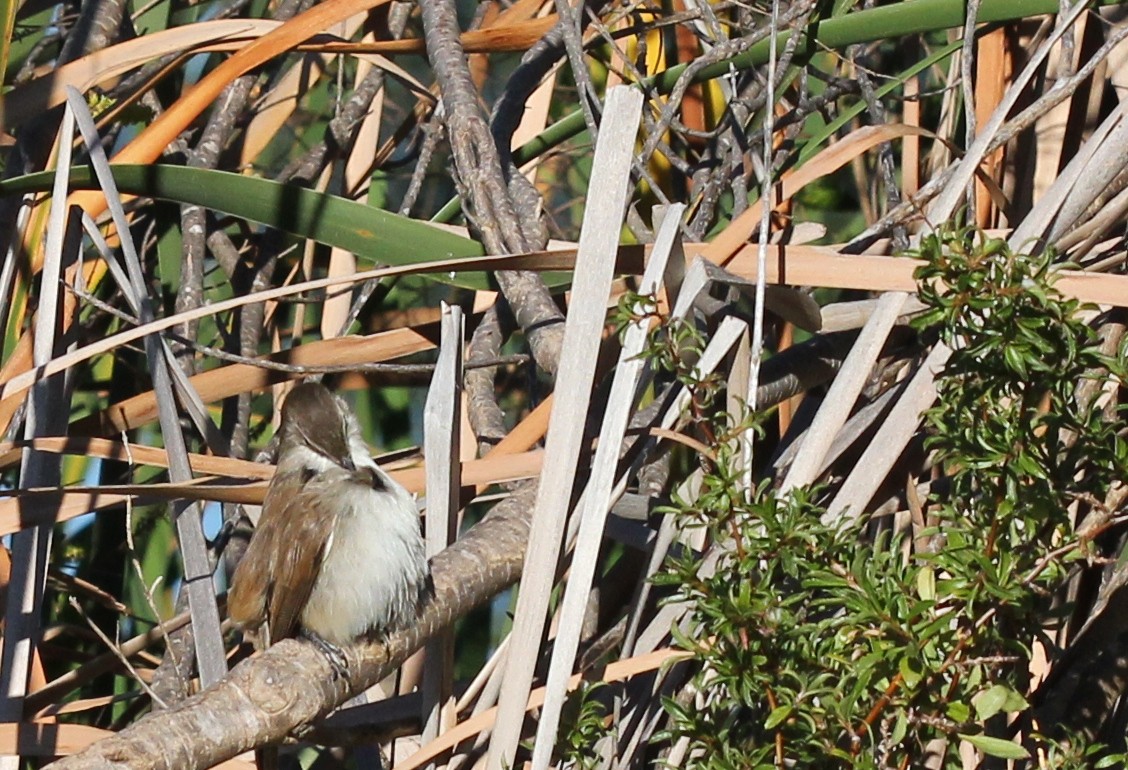Lesser Swamp Warbler
A species of Reed-warblers Scientific name : Acrocephalus gracilirostris Genus : Reed-warblers
Lesser Swamp Warbler, A species of Reed-warblers
Botanical name: Acrocephalus gracilirostris
Genus: Reed-warblers
Content
Description General Info
 Photo By JonRichfield , used under CC-BY-SA-3.0 /Cropped and compressed from original
Photo By JonRichfield , used under CC-BY-SA-3.0 /Cropped and compressed from original Description
The lesser swamp warbler is a plain coloured smallish bird 14–16 cm long and weighing around 20 gm. Its upperparts are rich brown, and it has a white supercilium. The underparts are white, with a rufous wash to the flanks. The long, strong bill has a slightly down-curved upper mandible; it is blackish-yellow with a yellower base. The legs are blue-grey and the eyes are brown. Adults of both sexes and juvenile birds are very similar in appearance. The song is rich and melodious, a series of bubbly phrases that include trilling notes, cheerup chee trrreee and a large number of variations, with pauses between phrases. 
Size
18 cm
Nest Placement
Shrub
Feeding Habits
Lesser Swamp Warbler's diet consists of insects and small frogs. It forages in reeds and on water surfaces, picking food from vegetation. Lesser Swamp Warbler is adapted to feed low above the water and occasionally in papyrus heads.
Habitat
The lesser Swamp Warbler inhabits wetland environments characterized by abundant vegetation such as reedbeds, reedmace, sedges, and papyrus within standing water bodies. These include lagoons, estuaries, rivers, dams, marshes, and lakes. The species is also found in areas with tall grasses and low bushes adjacent to water sources, across broader geographical regions that encompass various swamp and marshland habitats.
Dite type
Insectivorous
General Info
Feeding Habits
Bird food type
Behavior
The lesser swamp warbler builds a deep, firm cup nest from strips of reed blades, grass and sedges, which is lined with finer grasses. It is always placed in reeds above water. It nests mainly from August to December, with the earliest nesters being those in the winter rainfall areas of the Western Cape Province. It lays two or three brown eggs. This species is monogamous, pairing for life. The lesser swamp warbler is usually seen alone or in pairs, moving through wetland reedbeds, and clambering up and down reed stems. It eats insects and other small invertebrates. 
Species Status
This common species has a large range, with an estimated extent of 5.700,000 km². The population size is believed to be large, and the species is not believed to approach the thresholds for the population decline criterion of the IUCN Red List (i.e. declining more than 30% in ten years or three generations). For these reasons, the species is evaluated as Least Concern. 
Scientific Classification
Phylum
Chordates Class
Birds Order
Perching birds Family
Reed warblers Genus
Reed-warblers Species
Lesser Swamp Warbler